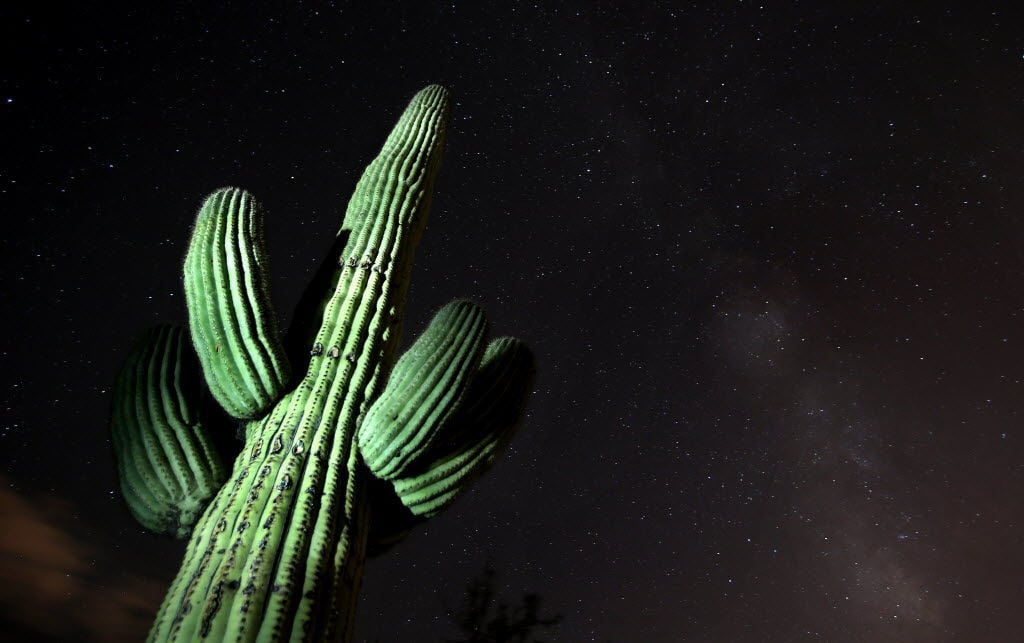Every Thanksgiving I mention the many things to be thankful for in this bountiful, great nation. We are blessed with natural resources, a diverse productive population, and many freedoms, unfortunately, not found in a good part of the world.
Locally, I give thanks for Tucson being the astronomy capital of the world and for our relatively dark urban skies compared to other cities around the world.
To celebrate Thanksgiving and our good urban skies, take a look toward the east at 8:30 p.m. Thursday, Nov. 26. The nearly full moon will be 22 degrees above the eastern horizon.
While its brightness will blot out dimmer stars, you should be able to see Orion the Hunter which is just fully risen. It is to the right (south) of the moon. Ten degrees above the moon is Taurus the Bull with its bright star Aldebaran.
Thursday morning in the pre-dawn sky Aldebaran was occluded (covered) by the moon for those parts of the U.S. north of a line running from Oregon to South Carolina.
Twelve degrees above Aldebaran is the Pleiades, the Seven Sisters. To the left (north) of the moon 27 degrees is the bright star Capella in Auriga the Charioteer. A good way to finish off Thanksgiving evening is to look southeast at 10:30 p.m. to see Sirius, the brightest star in the sky.





